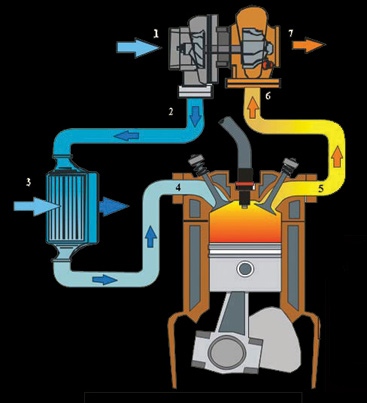
A turbocharger is a small radial fan pump driven by the energy of the exhaust gases of an engine. A turbocharger consists of a turbine and a compressor on a shared shaft. The turbine converts kinetic energy from the engine exhaust's velocity and potential energy from the exhaust's higher-than-atmospheric pressure into rotational kinetic energy, which is in turn used to drive the compressor. The compressor draws in ambient air and pumps it into the intake manifold at increased pressure, resulting in a greater mass of air entering the cylinders on each intake stroke.


The turbocharger has four main components. The turbine (almost always a radial turbine) and impeller/compressor wheels are each contained within their own folded conical housing on opposite sides of the third component, the center housing/hub rotating assembly (CHRA).


Turbochargers are a type of forced induction system. They compress the air flowing into the engine (see How Car Engines Work for a description of airflow in a normal engine). The advantage of compressing the air is that it lets the engine squeeze more air into a cylinder, and more air means that more fuel can be added. Therefore, you get more power from each explosion in each cylinder. A turbocharged engine produces more power overall than the same engine without the charging. This can significantly improve the power-to-weight ratio for the engine.
In order to achieve this boost, the turbocharger uses the exhaust flow from the engine to spin a turbine, which in turn spins an air pump. The turbine in the turbocharger spins at speeds of up to 150,000 rotations per minute (rpm) -- that's about 30 times faster than most car engines can go. And since it is hooked up to the exhaust, the temperatures in the turbine are also very high.
I just put this on my site. I hope it works for technologically challenged old farts! Car Exhausts
ReplyDelete